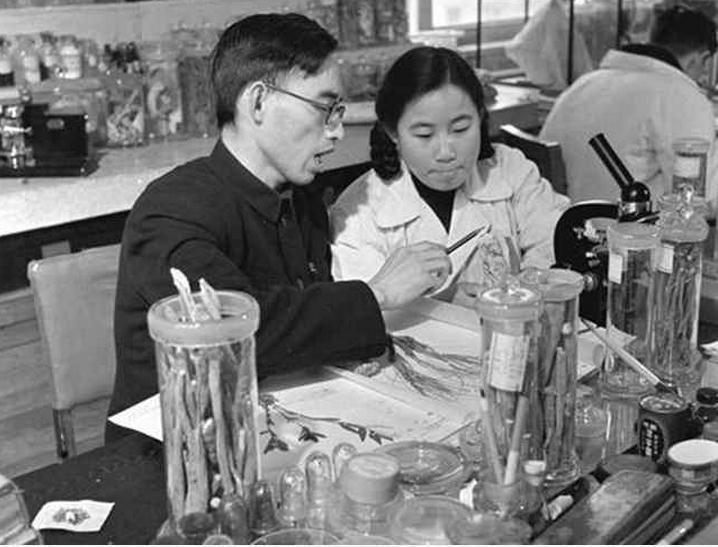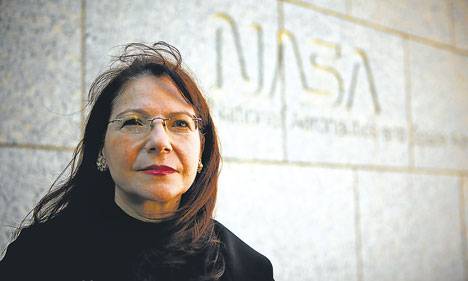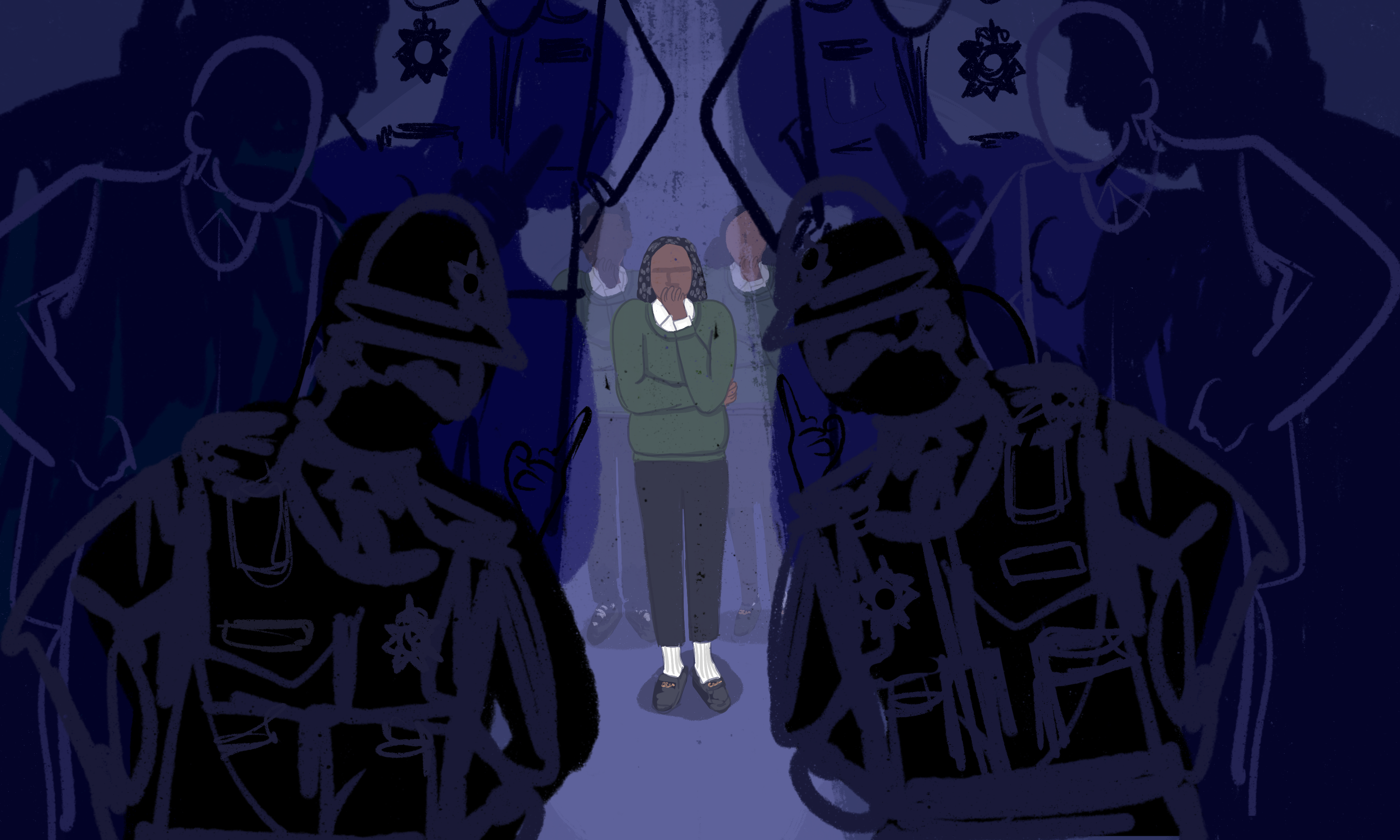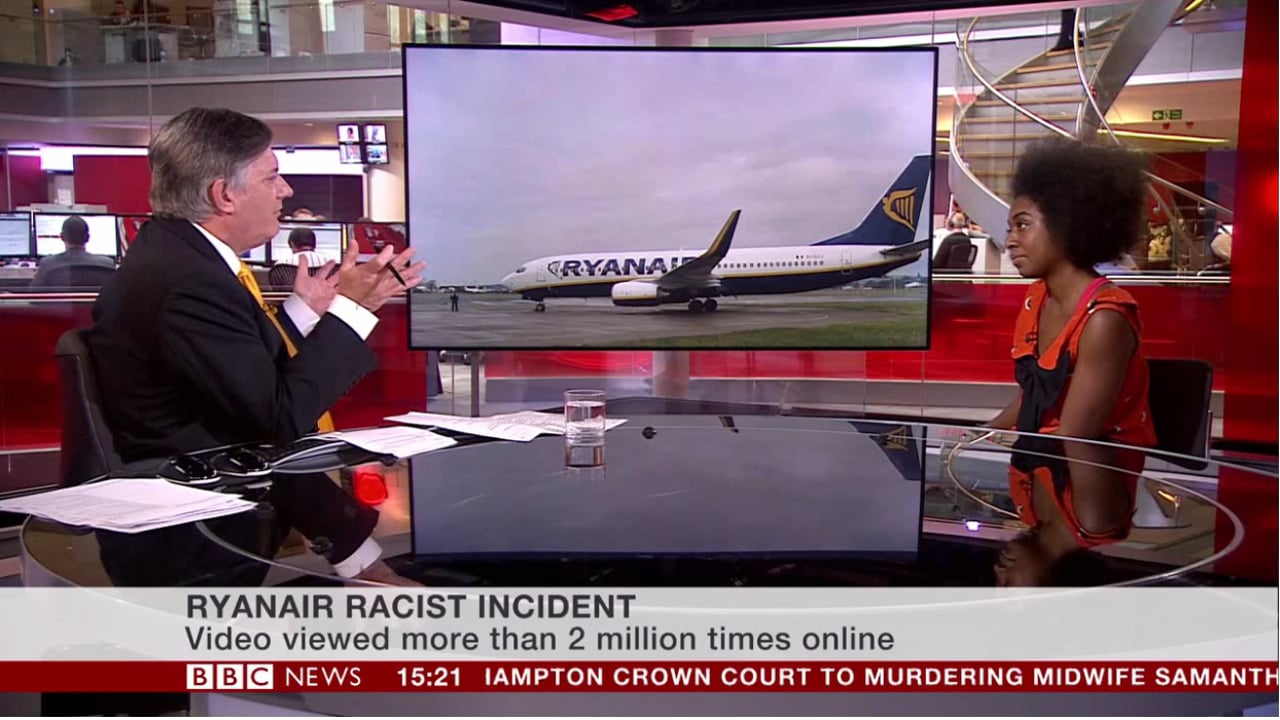
As the only WoC at a “Women in Science: Inspiring the next Generation of Scientists” conference hosted by the Natural Environment Research Council in 2015, I talked about the importance of encouraging BME students into research and how role models help. Yet it wasn’t long before a white woman tried to shut me down, saying “We don’t need any more role models.” I wish I had a chance to ask her how many black female scientists she has worked with or how many brown girls she knows that aspired to be a scientist and achieved their dreams.
Children from ethnic minority background are more likely to study a STEM subject, but they are more likely to be lost in the “leaky educational pipeline”. Ambitions and confidence of BME children are shaped by their family, friends and teachers but they also restricted by the perception of society of their identity.Traditional stereotypes of feminine and masculine roles and exposure to opportunity in STEM also play a big part in the career aspirations. Institutional racism and lack of mental health support means ethnic minorities are more likely to struggle with their degree. Combined with the constant pressure of having to work “twice as hard” as a white man, and the uncertain nature of academia, a career in medicine or engineering seems more worth it. And what happens when teachers show bias towards their students based on race and gender? Dr. Aderin-Pocock and Dr. Jemison were both told by their teachers to consider nursing when they had dreams to be astronauts. Dr. Villa-Komaroff’s advisor told her “girls don’t belong in chemistry” and Professor Nyokong was told science was too difficult. While these women persisted with their dreams, how many brilliant WoC has academia lost out on already?
Role models of every kind and colour are necessary to help BME girls to envision themselves as scientists: to show that people like them have always been pushing the boundaries of science and that they too can be a part of this amazing phenomena. For me, WoC role models have never been as important as now as I try to navigate through academia as a brown girl battling the microaggressions, if not some other forms of casual racism too, which scientists are guilty of too. Looking at all the current women of colour exploring all the different fields of science gives me strength. It gives me an assurance that someone is out there when I don’t have someone to turn to in my own department. It gives me the confidence that I am capable, if not better. For this International Women and Girls in Science day, let’s celebrate the WoC that are excelling in their fields today.
Dr. Maggie Aderin-Pocock is a Black British space scientist and a co-presenter of the astronomy TV show “The Sky at Night”.
Dr. Aderin-Pocock was raised by Nigerian parents in a council flat and has been smashing through barriers to pursue her dream in astronomy. Her parents divorced when she was four, causing her to move schools and homes several times, and she was diagnosed with dyslexia. But she persisted and now she has worked as a scientist in both private, public, and academic industries: she has worked on aircraft missile warning systems and hand-held landmine-detection instruments for the Defence Evaluation and Research Agency, developed a high resolution spectrograph for the Gemini telescope in Chile for her Fellowship in Imperial College, and led the Astrium optical instrumentation team where she managed the Aeolus satellite. Now she is an honorary research associate in UCL Department of Physics and Astronomy where she focuses on public engagement with science. 
Dr Maggie Aderin Pocock in conversation with Baroness Shirley Williams – Image via Southbank Centre/Flickr
Dr Adriana C. Ocampo is a Colombian-born planetary geologist and the Science Program Manager at NASA Headquarters.
As a child, she would go up to her roof at night time, pondering the night sky and dressing up her dolls as astronauts. Now she is part of NASA and has been involved in several projects including the Juno mission to Jupiter, the New Horizons mission to Pluto and currently she is the lead scientist for the European Space Agency’s Venus Express mission. Ocampo also led a team of scientists to the discovery of the Chicxulub Crater after seeing a satellite image where sinkholes (cenotes) were arranged in a semi-circular pattern and believing that this could be related to the crater hidden underneath. The asteroid of this impact is so massive that it is believed to be the cause of the K-Pg mass extinction, which caused the loss of approximately half of the Earth’s species including the dinosaurs.
Dr Adriana Ocampo – Image via NASA/Wikimedia Commons
Dr. Nergis Mavalvala is a queer Pakistani American astrophysicist that was part of the ground-breaking team that discovered gravitational waves.
Mavalvala started working on gravitational waves at least since her PhD where she was developing a small scale laser interferometer. This prototype helped the design of the Laser Interferometer Gravitational Wave Observatory (LIGO), which made the first ever detection of gravitational waves produced by two black holes that collapsed into each other. During her postdoctoral, Nergis Mavalvala worked in the desert to setting up detector, later, she joined as a staff scientist. Mavalvala notes that she feels “comfortable growing up at the fringes of society”. She was born in Lahore and raised in Karachi among a Zoroastrian community. She describes herself as an “out, queer person of colour” and now lives with her partner and two children in Cambridge, Massachusetts.
Tu Youyou is a Chinese pharmaceutical chemist who received a Nobel prize for the discovery of artemisinin and dihydroartemisinin.
Youyou was still a young researcher when the chaos of the Cultural Revolution was taking place. Mao Zedong urgently wanted to find a cure for malaria, which was destroying the Chinese army fighting in Vietnam and so Tu Youyou was recruited to a “secret government unit known as Mission 523”. She and her team looked at thousands of traditional recipes and studied 200 herbs, from which she produced almost 400 extracts. She noticed that sweet wormwood, a traditional malaria medicine dating back to 400 AD, was the most successful at “inhibiting” Malaria parasite in animals. She refined the techniques to extract artemisinin which helped produce treatments that have saved millions of lives.
 Tu Youyou as a student in the 1950s – Image via Xinhua News Agency/Wikimedia Commons
Tu Youyou as a student in the 1950s – Image via Xinhua News Agency/Wikimedia Commons
Mae C. Jemison M.D. is an engineer, physician and the first African American woman astronaut.
Jemison was only sixteen when she enrolled at Stanford University in Chemical Engineering before going on to earn a Medical degree. Jemison’s thirst for space travel followed her from a young age and she pursued the opportunity when space travel opened up for women. She was chosen as a Mission Specialist for the STS-47. She conducted experiments on bone cells, weightlessness and motion sickness. Despite this expertise in space travel, Jemison’s passions were unbounded. She loved dancing and has choreographed modern jazz and African dance shows. During college, she was the President of the Black Student Union and has the equivalent of a BA degree in African and Afro American studies. On her space mission, Jemison brought with her an Alvin Ailey American Dance Theatre poster, artwork from West African countries and a photo of Bessie Coleman, the first African American female pilot. Since leaving NASA, Jemison has started her own companies: Jemison Group and BioSentient Corp.
Prof. Maryam Mirzakhani is an Iranian American mathematician and the first woman to be awarded the Fields Medal mathematics prize for her work in the field of geometry and dynamical systems.
Mirzakhani didn’t always envisage a future in mathematics: she loved books and wanted to be a writer. Her brother would tell her problems and solutions he learnt at school which sparked her interest in mathematics. In 1994 she became the first female Iranian student to win a gold medal in the International Mathematical Olympiad and in the following year she won two gold medals with a perfect score. Mirzakhani went on to earn a BSc in Mathematics from Sharif University of Technology, saying in a 2014 interview that “the more I spent time on mathematics, the more excited I became.” She moved to the US to work under the Fields Medalist McMullen at Harvard University. During her early research years, Mirzakhani investigated geometric structures on surfaces with a specific focus on hyperbolic planes. Her more recent work investigates Teichmuller dynamics of moduli space and she is currently a professor at Stanford University.
Prof. Tebello Nyokong is a South African chemist and the Professor of Medicinal Chemistry and Nanotechnology at Rhodes University.
Nyokong had to fight hard before becoming one of South Africa’s treasured science professors. Her schooling wasn’t stable: in an interview in 2014 she described how for every day she spent in school, she spent a day shepherding. Tebello Nyokong joined Rhodes University in 1992 as a lecturer and now she is a distinguished professor with her own research lab. She is internationally famed for pioneering the research of photodynamic therapy (PDT), a novel technique to cure cancer using lasers, which is seen as a safer alternative to chemotherapy as it only focuses on the organs that are affected. Professor Tebello Nyokong specifically uses phthalocyanine molecules to develop drugs that improves the effectiveness of PDT.
Dr. Aradhna E. Tripati is a paleoclimatologist and isotope geochemist and an associate professor at UCLA.
Aradhna Tripati runs her own lab studying climate change, the ocean and the carbon cycle. It is also one of the leading labs in the world for clumped isotopes thermometry, a method used to measure paleotemperatures by taking advantage of the temperature dependence of heavy carbon and oxygen isotopes “clumping” within carbonate minerals. Dr. Tripati’s own research focuses on the carbon cycle, paleoclimate and sea water change especially by using geochemistry techniques on microfossils called coccoliths and foraminifera. She has shown that the variation of the partial pressure of carbon dioxide correlates with temperature and sea levels over the last 800,000 years and that decreases coincide with glacial expansions, which supports the theory that CO2 is the main “trigger” for glaciation.
"It is my pleasure to inform you that you have been selected to receive the Presidential Early Career Award for Scientists and Engineers."
— Dr. Aradhna Tripati 🏳️🌈 🦋 🐝 (she/hers) (@ClumpedIsotopes) January 9, 2017
Dr. Chanda Prescod-Weinstein is a Jewish African American theoretical physicist.
Dr. Prescod-Weinstein is only the 63rd African American woman to receive a PhD in Physics (less than hundred African American women hold this prestige) and currently a research associate at the University of Washington. Her research areas span across dark matter, cosmic acceleration and quantum field theory. Her first postdoctoral position was with NASA in the Observational Cosmology Lab at Goddard Space Flight Center and later she was awarded the Dr. Martin Luther King Jr Fellowship at MIT. She is also an outspoken activist, known for her “anti-racist, pro-feminist, and pro-queer speaking”. Chanda Prescod-Weinstein is a writer and she volunteers as an editor-in-chief for the online literary magazine, The Offing. She maintains a “Decolonising Science Reading List” that every budding scientist and science enthusiast should check out.
https://twitter.com/IBJIYONGI/status/773976570566291456
Dr. Jackie Yi-Ru Ying is a Muslim Taiwanese researcher in nanotechnology and the Executive Director of the Institute of Bioengineering and Nanotechnology (IBN).
Dr. Ying has the fantastic ability of taking a biomedical problem and using nanotechnology to develop a solution. Her talent led her to a position at the Department of Chemical Engineering at MIT in 1992 and she became a full time professor in 2001 at the age of only 35 – making her one of the youngest professors at the university. She left the prestigious position to become the first executive director at IBN and help Singapore launch into the industry of biomedical science. She is in charge of 160 scientists and students that apply nanotechnology and bioengineering to the development of biosensors, pharmaceuticals, and green chemistry. Her own research concerns “advanced nanostructured materials for catalytic and biomaterial applications” and some of her work include insulin-carrying nanoparticles for diabetics, and scaffolds for bone regeneration.
The women of the Indian Space Research Organisation, part of the team behind India’s inaugural interplanetary space mission.
The Mars Orbiter Mission (MOM), also known as Mangalyaan, made India the first country to reach Mars on its first attempt while also achieving this with an impressively low budget. The primary aim behind MOM is to develop technology for further interplanetary missions and secondarily to study the surface and atmosphere of the red planet. When MOM entered Mars orbit, I couldn’t help but share the iconic photo of the Indian women in saris hugging and celebrating. Notable women include Seetha Somasundaram (Program Director of ISRO), Nandini Harinath (Project Manager, Mission Design and Deputy Operations Director, Mars Orbiter Mission) and Minal Rohit (Scientist and Engineer, Project Manager, Methane Sensor for Mars). ISRO are already paving the way for a “follow-up” mission, Mangalyaan 2, to explore the “traces of life and water” in Mars.
Here’s an interesting article celebrating the success of our women scientists at @isro https://t.co/zhJEmI4ytZ
— Smriti Z Irani (@smritiirani) December 14, 2016
Dr. Donna J. Nelson is a Native American Professor of Chemistry at the University of Oklahoma.
Dr. Nelson specialises in organic chemistry and her current research involves “characterisation and analysis” of single walled carbon nanotubes (SWCNT) especially how functionalizing the SWCNT influences their NMR spectrum. Her earlier research focused on mechanisms in alkene addition reactions and she developed methods for investigating the mechanisms of the reactions. Dr. Nelson especially is devoted to improving the public’s perception of science and scientists and “advancing diversity” in chemistry. She conducted a thorough survey on the diversity of science which brought to light the pervasiveness of the lack of representation in science. However, Nelson may arguably be best known for her work as a science consultant for TV shows especially for the award winning show Breaking Bad.
Dr. Lydia Villa-Komaroff is a Mexican American molecular and cellular biologist.
Dr. Villa-Komaroff was only six months into her postdoctoral fellowship at the lab of the Nobel Laureate Walter Gilbert when her first breakthrough happened: inducing bacteria to synthesise proinsulin. This was the first time a human’s (or any mammal’s) hormone was synthesised using bacteria. This discovery that a human hormone can be produced by bacteria was groundbreaking for the drug industry. She also worked on Alzheimer’s disease and proteins that develop vision. Dr. Villa-Komaroff has been a member of faculty at the Medical Schools in University of Massachusetts and Harvard and is now is now the Chief Executive Officer of Cytonome Inc and Chief Scientific Officer of Cytonome/ST, which is building the first “optical human cell sorter” for medical issue.
Lydia Villa-Komaroff, 3rd Mexican American woman in US to receive a doctorate degree in sciences https://t.co/r0IurufFfv #womenscienceday pic.twitter.com/ytBHjvWLRg
— The Royal Society (@royalsociety) February 10, 2017
Professor Shubha Tole is an Indian neuroscientist and Principal Investigator at the Tata Institute of Fundamental Research
Tole started her research on the mammalian brain as a postdoctoral student at the University of Chicago. However, after studying in the US for more than ten years, she and her husband wanted to move their work to India, which would provide students there access to cutting edge research and push the reputation of India’s scientific research forwards. Professor Tole now runs her own lab at the Tata Institute of Fundamental Research where she studies mechanisms such as cell division and neuronal wiring that develop the brain, and the diseases that affect certain parts of it. She discovered Lhx2, a gene that influences the amygdala, cerebral cortex, and the hippocampus, and recorded how it affects the development of the brain at different growth stages. Her contributions to neuroscience landed her the Infosys Prize in Life Sciences in 2014.
Image by Priyanka Meenakshi (@priyankameenakshi)










